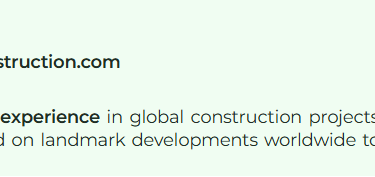Exploring the Top Trends in Themed Architecture for Resorts, Zoos, and Museums
8/7/20252 min read


Introduction to Themed Architecture
Themed architecture has become a vital aspect of designing engaging and immersive environments for public spaces such as resorts, zoos, and museums. This architectural style merges aesthetics with functionality, allowing visitors to experience an environment that enhances their overall enjoyment and education. In recent years, several trends have emerged, showcasing how architects and designers are innovating within this sector.
Biophilic Design: Nature as an Inspiration
One prominent trend in themed architecture is the incorporation of biophilic design principles. This approach emphasizes the connection between people and nature, integrating natural elements into the built environment. Resorts and hotels, for instance, are increasingly designed to incorporate green roofs, indoor gardens, and natural light, creating serene atmospheres that promote relaxation and well-being. Zoos have also adopted biophilic design by utilizing open habitats that mimic natural environments, allowing animals to engage in more natural behaviors while improving visitor experience.
Interactive and Immersive Experiences
Another defining trend is the focus on creating interactive and immersive experiences. Museums, for instance, are moving away from traditional exhibits, opting instead for environments that invite visitors to engage with the display actively. This trend includes hands-on exhibits, augmented reality, and themed environments that transport visitors into different historical contexts or scientific realms. Zoos are similarly enhancing visitor interactions through educational programs and interactive displays that allow guests to learn about wildlife conservation, all while contributing to an engaging atmosphere.
Technological Integration in Themed Architecture
The integration of cutting-edge technology is revolutionizing themed architecture across various institutions. Resorts are utilizing smart technologies to enhance guest services and experiences, including mobile check-ins and intelligent room controls that adjust to individual preferences. Museums are increasingly adopting digital media to complement traditional displays, offering virtual environments and experiences that captivate visitors' attention. Zoos are also leveraging technology, such as drones for monitoring animal movements, and mobile applications that enhance educational opportunities for visitors. This trend reflects a broader societal shift toward the fusion of technology and architecture, creating cohesive environments that are both functional and aesthetically pleasing.
Conclusion: The Future of Themed Architecture
As we move into the future, the trends in themed architecture for resorts, zoos, and museums are likely to continue evolving. With an increased focus on biophilic designs, interactive experiences, and technological integration, designers are setting new standards for how these institutions can engage their visitors while promoting education and sustainability. Adapting to these trends not only enhances the aesthetic appeal of these spaces but also fosters a deeper connection between visitors and the environments that surround them, creating memorable experiences that resonate long after a visit.


